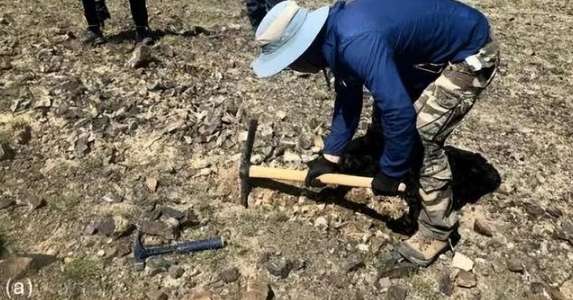The Nanjing Institute of Geology and Palaeontology, Chinese Academy of Sciences, has gained a lot in recent years. I just wrote a few days ago that the institute, together with researchers from many domestic and foreign units, discovered 800-million-year-old Huo's beads in Shandong and Anhui, and unveiled the After solving the mystery of this strange creature, today's news is dominated by the agency, and its importance is no less important.
Important findings
A research result was published in Papers in Palaeontology, an international professional journal of paleontology. It is the earliest known freshwater arthropod and even the oldest solid fossil record of terrestrial/freshwater arthropods outside of the Russian continent.
This is the Thelmaldibrak bug.


This species was discovered by Chinese and foreign researchers from the Nanjing Institute of Geology and Paleontology of the Chinese Academy of Sciences in the late Silurian strata at the northwest edge of the Junggar Basin in Xinjiang, China. The specific location is in a set of formations called the "Xemistai Formation" in the Saier Mountains near northern Xinjiang and Buxer County. This formation is mainly composed of materials such as volcanic rocks and volcanic clasts, so In the past, it was always considered to be a "dumb stratum". The so-called "dumb stratum" refers to a stratum that is considered to be poor in biological fossils in terms of biostratigraphy.
The researchers at that time actually wanted to find many plant fossils in the "Semisitai Formation" formation, but accidentally discovered the fossils of Thermadibrachia. It looks nothing special, a bit like a caterpillar with exaggerated spines. There are a pair of side spines on its body segments and a slender tail spine.

Originally, they were looking for plant fossils, so the researchers analyzed the lithological characteristics and ancient salinity of the surrounding rocks of the formation early. , in addition, many plant macrofossils and spore fossils were discovered. These earlier studies just played a role in exploring the habitat of Thermadibrachia. Combining various contents, the researchers speculated that Thermadi Braakella most likely survives in mountainous river or lake environments.
Importance
The discovery of Braakella sermaldi is very important because it, The researchers were able to extend the paleogeographic range of late Silurian terrestrial/freshwater arthropods from Laurus to the island arcs in the ancient Asian Ocean of the Northern Hemisphere. This revealed a key point of information: the late Silurian , arthropods have begun to explore lifestyles in habitats other than the ocean, such as land and freshwater such as rivers and lakes.
No matter what type of animal, their landing from the ocean is an important process in the evolution of life, especially Arthropods are one of the important representatives of metazoa.


So in short it can be said: The discovery allows researchers to gain new insights into the paleogeographic distribution of early terrestrial/freshwater arthropods and their origins and evolution.